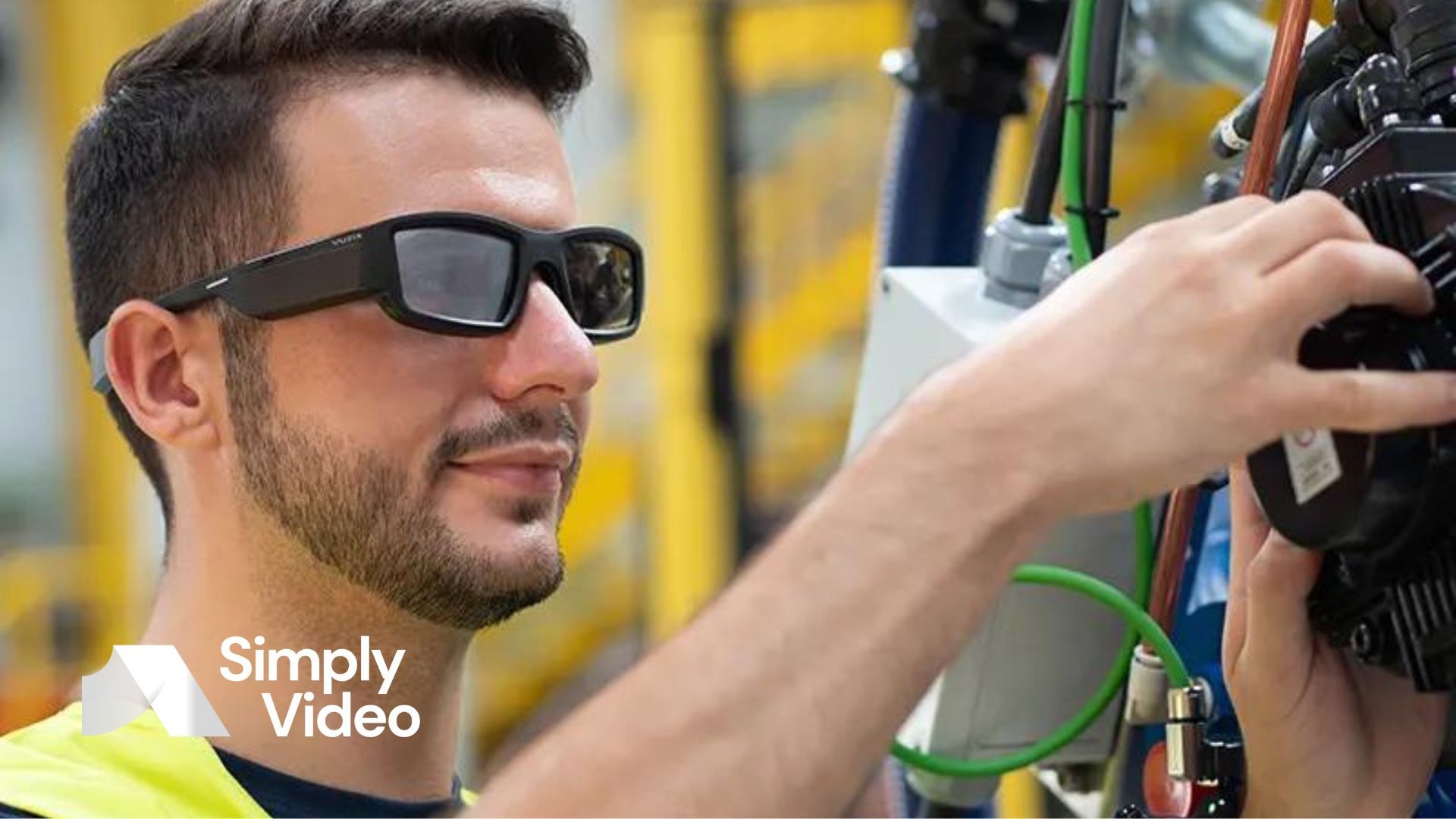3 exciting use cases for WebRTC video in Unity AR projects
The SimplyVideo SDK makes it simple to embed 2D WebRTC video in Unity AR projects. Discover 3 unique and exciting use cases in our guide.

If you're a Unity developer working in augmented reality (AR), we've got big news for you.
We're preparing to release the SimplyVideo SDK: a software development kit that makes it easy for devs to embed two-way WebRTC video feeds into their Unity AR projects.
This is game-changing – and not just because it saves hours of research, coding and cold sweats.
See, the SimplyVideo SDK is powered by the Pexip Cloud Video Interoperability (CVI) service. In simple terms, this means devs can use the SimplyVideo platform to pipe video into some of the world's most popular videoconferencing apps.
That includes business staples such as Microsoft Teams, Cisco and Google Meet, as well as streaming services like Twitch and YouTube.
The SimplyVideo SDK unlocks a missing feature of Unity's AR tools. It brings the proven power of 2D
video collaboration into 3D AR spaces. And it does it in a powerfully inclusive way – by allowing users to connect using platforms they know, love and pay for.
It's exciting stuff. But while we've provided the tools, it's up to you – the development community – to wield them. And we can't wait to see the innovative software solutions you come up with.
Right now, though, you might be thinking, well… how?
We get it. Things like this can be tricky to visualise. And we're also planning to release some example applications when we drop the SDK on GitHub (soon!).
In the meantime, we'll do our best to give you a flavour of what our SDK can do. Here are three potential applications that cover some of its most exciting and useful features.
1. AR workflow apps
If you want a headline feature, this is it: the ability to embed WebRTC video feeds as 2D objects in 3D space.
This appears to the user as a floating video screen. You can keep this fixed and static, make it manipulable or set it to follow the user's gaze.
With the floating screen, the user can engage in a two-way dialogue with a remote participant. This could be via SimplyVideo or through a third-party integration like Microsoft Teams.
For the user, it's as intuitive as it gets. The WebRTC feed feels as familiar as their television or the screen on their laptop.
And, of course, you can embed buttons to allow for interaction with the feed. This could include buttons to initiate the call, hang up and so on. Our SDK makes it simple to send and receive commands to and from SimplyVideo – and, by extension, its integrations.
The remote participant, meanwhile, sees what the wearer sees – they can get a direct feed of the AR space, including any 3D objects.
This is just one of many potential setups. But it's an especially useful one for AR workflow and training apps.
You can picture the scene. An engineer is working on a piece of machinery while wearing an AR headset. Perhaps they're following a 3D instruction manual or poring over live industrial IoT data.
Then they hit a snag. They're not sure what to do next – so they hit the "click to call" button in their AR application.
Bingo. The floating screen appears and they're connected to a remote expert. This expert can provide step-by-step instructions to help the engineer solve the problem, hands-free.
2. Bringing AR to the conference room
The SimplyVideo SDK isn't just about floating video screens. You can use it to interface with WebRTC video in all sorts of practical and creative ways.
For instance, you can stream a live feed of the wearer's view directly into a Teams or Meet conference.
This simple feature has huge potential because it solves one of the unspoken issues with AR.
Here's the thing. An oft-purported benefit of AR technology is that it can bolster and streamline collaboration – between civil engineers working on a 3D city map, say, or shopfitters planning a layout for a new department store.
This is true. But those collaborative boons come at a cost. AR hardware is becoming more affordable – but it's hardly as cheap as rock and dodgems.
And with issues of cost come issues of scale. If you're a procurement manager for a shopfitting firm, are you going to prioritise buying a fleet of AR headsets for virtual site tours or the glass and wood and metal you need to get jobs done?
Our SDK lets you sidestep this problem by including a "share" button in your app. When the user taps it, their POV is fed – via WebRTC – to a roomful of waiting stakeholders.
These stakeholders don't need their own AR headsets. They don't even need to be in the same space as the wearer. They can watch your app in action from anywhere with an active internet connection.
This feature has numerous applications. It could be used by architects demonstrating a new building in situ. Or by interior designers showing off a fully fitted-out hotel bedroom. Or even by a developer who wants to demonstrate an in-progress build of their app.
In any case, it's an easy way to overcome obstacles of cost and scale – and this has knock-on benefits for your app, too.
3. Streaming AR content
Sharing your AR app with colleagues and stakeholders is one thing. But the SimplyVideo SDK can help you cast the net much, much wider than that.
Remember: SimplyVideo integrates with some of the world's most popular streaming platforms, including Twitch, YouTube and Facebook.
What does this mean for you? Build a "share" button into your app and users can cast their AR content to followers across the globe.
And just like that, AR stops being a solitary experience and becomes an engaging, hype-generating event shared by dozens or even thousands of people.
The possibilities are limitless. Again, the feature has enterprise potential – for app developers, architects and anyone else who wants to present their work to a wide audience. But it could also be harnessed by journalists who are reviewing new software or hardware. Or even by content creators who want to show off their latest tech purchase.
It's a simple addition – but for you, the marketing payoff could be monumental.
The SimplyVideo SDK will soon launch on GitHub with support for Magic Leap devices and Unity. Want to keep abreast of the latest developments? Be sure to bookmark our
XR blog.












